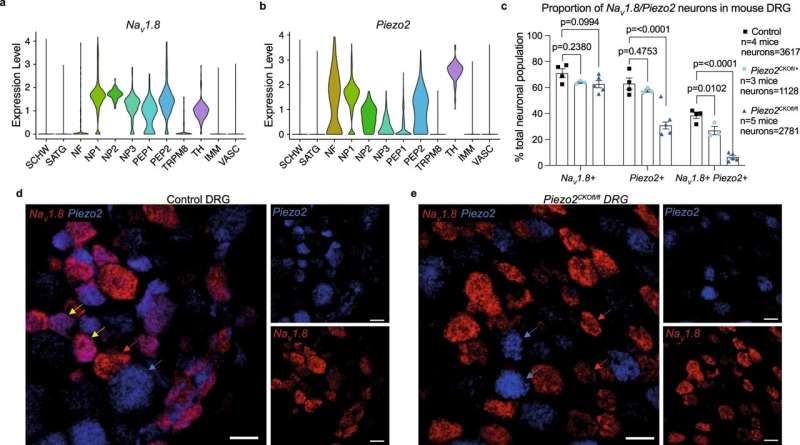This article has been reviewed according to Science X's editorial process and policies. Editors have highlighted the following attributes while ensuring the content's credibility:
fact-checked
peer-reviewed publication
trusted source
proofread
New therapeutic target for osteoarthritis identified

Investigators have discovered that a subset of sensory neurons promote osteoarthritis-related joint pain and inflammation, suggesting a new therapeutic target for pain management, according to findings published in Nature Communications.
"There is a shortage of therapeutic agents that specifically target osteoarthritis pain, which is a huge problem throughout the world. By providing a mechanism through which pain is produced in the disease, we provide new targets for drug development," said Richard Miller, Ph.D., Professor Emeritus of Pharmacology and a co-author of the study.
Osteoarthritis occurs when cartilage in the joints breaks down and impacts the underlying bone. The disease currently affects over 32.5 million adults in the U.S., according to the Centers for Disease Control and Prevention.
Treatments include anti-inflammatory medications, exercise and, in some severe cases, opioid medications. However, current research efforts are focused on identifying non-opioid therapeutic targets that are more effective.
Previous work found that the ion channel protein Piezo2 allows neurons called nociceptors to respond to mechanical force. Nociceptors are sensory nerves that respond to stimuli which produce pain, as seen in osteoarthritis when mechanical force impacts degraded joints.
In the current study, the investigators studied Piezo2 knock-out mice, finding that osteoarthritis-related pain and inflammation in the mice were significantly reduced. Notably, female knock-out mice were protected from mechanical sensitization associated with inflammatory joint pain, and male knock-out mice were protected from joint pain associated with osteoarthritis.
Single-cell RNA sequencing of both mice and human sensory neurons also confirmed that Piezo2 is expressed by nociceptors that stimulate joints in osteoarthritis.
"Furthermore, we demonstrated how molecules like the nerve growth factor receptor TrkA can sensitize the Piezo2 response in the disease, meaning that Piezo2 can produce pain more easily under pathological conditions such as joint degeneration," Miller added.
The findings suggest that targeting Piezo2 may be a promising therapeutic target for osteoarthritis pain management.
"Identifying the complete molecular characteristics of the nerves that produce pain in osteoarthritis will help identify additional therapeutic targets," Miller said.
More information: Alia M. Obeidat et al, Piezo2 expressing nociceptors mediate mechanical sensitization in experimental osteoarthritis, Nature Communications (2023). DOI: 10.1038/s41467-023-38241-x



















